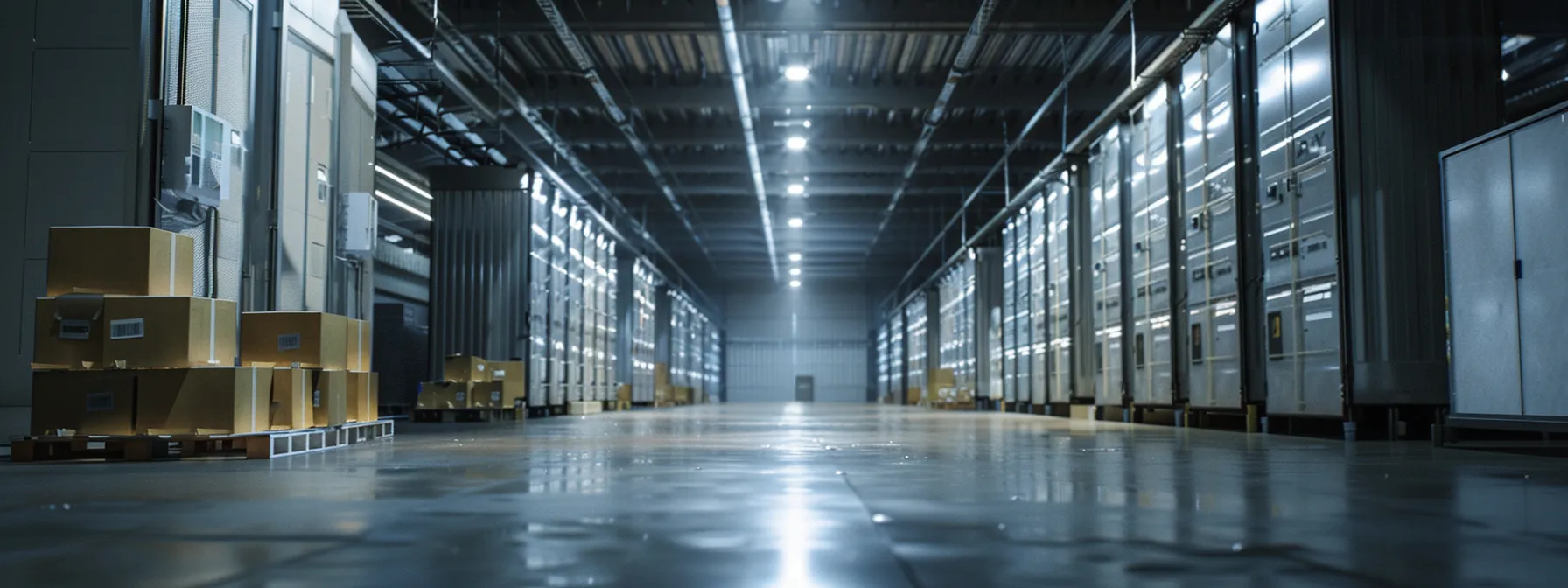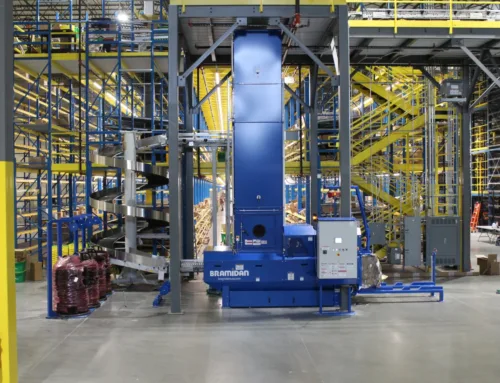
Selecting the right commercial refrigeration units is crucial for businesses in the food and beverage industry. At End2EndLogix, we offer a wide range of products and services to meet your specific needs, from energy-efficient units that minimize heat output to advanced cooling systems. Our expert team understands the complexities of commercial refrigeration and can guide you through the selection process. In this article, we’ll explore key considerations to help you make an informed decision for your business. Keep reading to discover how to choose the perfect refrigeration solution and optimize your operations.
Assessing Your Space for Refrigeration Unit Installation

Before installing commercial refrigeration units, you must carefully assess your space to ensure optimal performance and efficiency. This evaluation involves more than just measuring dimensions; it requires strategic planning for layout, ventilation, and potential growth. Understanding how components like the compressor, evaporator, and condenser interact within your space is crucial. You’ll need to consider factors such as refrigerant type, airflow patterns, and even truck access for deliveries. By thoroughly examining these aspects, you’ll be better equipped to select end2endlogix services and position refrigeration units that meet your current needs and accommodate future expansion. contact us
Measuring the Available Space
You need to accurately measure the available space for your cooler or chiller installation to ensure proper fit and functionality. Consider not only the footprint but also ceiling height, doorway clearances, and space for maintenance access. Factor in additional room for storage of fresh products and future expansion, as well as any warranty requirements that may impact placement.
Considering the Layout for Efficient Flow
You need to design your layout for efficient product flow and energy conservation. Consider how you’ll move cargo from delivery trucks to storage areas and display cases. Place high-traffic items near entrances for easy access. Install glass doors on refrigerated units to reduce energy loss while allowing customers to see products. Position water-cooled units strategically to minimize plumbing costs and maximize cooling efficiency. Optimize your layout to reduce unnecessary product transport within your facility, saving time and energy.
Accounting for Ventilation Requirements
You must ensure proper ventilation for your commercial refrigeration units to maintain optimal performance and sustainability. Consider integrating your refrigeration system with your warehouse’s air conditioning to create an efficient cold chain. Place refrigerated containers strategically to allow adequate airflow, preventing heat buildup and reducing energy consumption.
Planning for Future Expansion
You need to plan for future expansion when selecting and installing commercial refrigeration units. Consider modular systems that allow easy scaling as your plant or factory grows. Leave space for additional trailers or units that may be needed as your operation expands. Factor in the potential switch to more environmentally-friendly refrigerants like ammonia or carbon dioxide, which may require different equipment or safety measures in the future.
Understanding Refrigeration Needs Based on Product Types

You need to select the right commercial refrigeration units for your specific product types to ensure optimal preservation and customer satisfaction. Different goods require varying temperature ranges, from frozen foods to chilled beverages, much like how a vehicle’s thermostat regulates engine temperature. Understanding the storage needs of perishable items is crucial, as is considering the volume and turnover rate of your inventory. This knowledge helps you choose units that can handle your stock efficiently, similar to how javascript optimizes website performance. For specialized products, you may need custom refrigeration solutions, just as certain vehicles require specific fuel types. By carefully assessing these factors, you’ll be better equipped to select refrigeration units that meet your unique business needs and keep your customers happy.
Identifying Refrigeration Temperature Requirements
You need to identify the specific temperature requirements for each product type to ensure proper refrigeration. Consider the optimal temperature range for freezing items like ice cream versus chilling fresh produce or beverages. Factor in temperature fluctuations that may occur when opening and closing refrigerated van doors or liquid valves. Implement temperature monitoring systems that provide real-time feedback, allowing you to adjust settings as needed to maintain product quality.
Differentiating Between Perishable Goods Storage Needs
You need to differentiate between storage needs for various perishable goods to ensure optimal preservation. Consider factors like humidity levels, air circulation, and temperature stability when selecting refrigeration units like the TSSU 48 12 for different product types. As climate change impacts supply chains, you may need to adjust your refrigerated storage solutions, similar to how engines adapt to different fuel types. Look for “refrigerated storage near me” options that offer flexible steel containers to accommodate diverse perishable goods and changing inventory needs.
Selecting Units Based on Volume and Turnover Rate
You need to select refrigeration units based on your product volume and turnover rate to ensure optimal storage and efficiency. For high-volume, fast-moving items like beverages, consider larger units such as the True TSSU 72 30M B ST or TSSU 48 12 HC, which offer ample storage and quick access. For specialty items with lower turnover, like fine wines, a WhisperKool wine cooler might be more appropriate. The True TSSU 48 12 HC and TSSU 72 30M B ST provide versatile options for businesses with varied product types and turnover rates, allowing you to adjust storage capacity as needed.
Considering Specialized Units for Specific Products
You need to consider specialized refrigeration units for specific products to maintain optimal quality and freshness. A freezer unit works well for storing ice cream and frozen meats, while a cooler unit is better suited for produce and dairy items. For transportation, a thermo king reefer unit or standard reefer unit can maintain consistent temperatures during transit. When dealing with large-scale operations, a refrigeration condensing unit might be necessary to handle the cooling demands of multiple refrigerated spaces efficiently.
Energy Efficiency and Sustainability Concerns

You need to prioritize energy efficiency and sustainability when selecting commercial refrigeration units for your business. As energy costs rise and environmental regulations tighten, choosing eco-friendly options like advanced commercial refrigeration condensing units can significantly impact your bottom line and carbon footprint. Consider how trailer refrigeration systems have evolved to meet stricter emissions standards while maintaining performance. By comparing energy consumption models, evaluating cutting-edge energy-saving features, understanding refrigerant impacts, and checking for relevant certifications, you’ll make informed decisions that benefit both your business and the environment. These considerations are crucial for long-term success in today’s competitive market.
Comparing Energy Consumption Models
You need to compare energy consumption models when selecting commercial refrigeration units to maximize efficiency and minimize costs. Look for units with Energy Star certification, which typically use 20-30% less energy than standard models. Consider features like LED lighting, high-efficiency compressors, and smart defrost systems that can significantly reduce power usage over time.
Evaluating Energy-Saving Features and Technologies
You need to evaluate energy-saving features and technologies when selecting commercial refrigeration units to reduce operational costs and environmental impact. Look for units with variable speed compressors, which adjust cooling output based on demand, and smart defrost systems that activate only when necessary. Consider options with heat recovery systems that repurpose waste heat for other purposes, such as water heating or space heating, further improving overall energy efficiency.
Understanding the Environmental Impact of Refrigerants
You need to understand the environmental impact of refrigerants when selecting commercial refrigeration units. Choose units that use low Global Warming Potential (GWP) refrigerants like R-290 (propane) or R-600a (isobutane) to minimize your carbon footprint. Consider the long-term effects of your refrigerant choice, as regulations may change, requiring costly retrofits or replacements in the future.
Checking for Energy Certifications and Ratings
You need to check for energy certifications and ratings when selecting commercial refrigeration units to ensure optimal efficiency and compliance with industry standards. Look for Energy Star certification, which indicates the unit meets strict energy efficiency guidelines set by the U.S. Environmental Protection Agency and the Department of Energy. Consider the Consortium for Energy Efficiency (CEE) tier ratings, which provide additional information on a unit’s energy performance beyond Energy Star requirements.
Evaluating the Total Cost of Ownership

You need to evaluate the total cost of ownership when selecting commercial refrigeration units to make informed, cost-effective decisions for your business. This assessment goes beyond the initial price tag, encompassing various factors that impact your long-term investment. By calculating upfront costs, estimating ongoing expenses, considering unit lifespan, and factoring in potential rebates, you’ll gain a comprehensive understanding of the true financial implications. This holistic approach helps you select units that offer the best value over time, balancing performance, efficiency, and cost-effectiveness to support your business goals and budget constraints.
Calculating Upfront Purchasing Costs
You need to calculate the upfront purchasing costs when selecting commercial refrigeration units to accurately assess your initial investment. Consider not only the base price of the unit but also any additional expenses for customization, delivery, and installation. Factor in costs for necessary accessories or modifications to your existing space to accommodate the new equipment.
Estimating Ongoing Maintenance and Operation Expenses
You need to estimate ongoing maintenance and operation expenses when selecting commercial refrigeration units to budget accurately for long-term costs. Calculate potential energy consumption based on the unit’s efficiency ratings and your usage patterns. Factor in regular maintenance costs, including filter replacements, compressor checks, and potential repairs. Consider the availability and cost of replacement parts, as well as the expertise required for servicing specific models.
Considering the Lifespan of Refrigeration Units
You need to consider the lifespan of commercial refrigeration units when evaluating total cost of ownership. Units with longer lifespans, like those from reputable manufacturers, may have higher upfront costs but can provide better value over time. Factor in how long you expect to use the equipment and compare warranty terms to assess potential long-term savings.
Factoring in Potential Energy Rebates and Incentives
You should factor in potential energy rebates and incentives when evaluating the total cost of ownership for commercial refrigeration units. Many utility companies and government agencies offer financial incentives for businesses that invest in energy-efficient equipment. Research available programs in your area and calculate how these savings could offset your initial investment or ongoing operational costs.
Exploring Advanced Features and Technologies

You need to explore advanced features and technologies when selecting commercial refrigeration units to stay competitive and maximize efficiency. Modern units offer smart controls for remote monitoring and precise temperature management, while innovative cooling technologies can significantly reduce energy consumption. Modular designs provide flexibility for future expansion or reconfiguration, adapting to your changing business needs. Additionally, units with easy access and maintenance features can save time and money on upkeep. By understanding these cutting-edge options, you’ll make informed decisions that enhance your operations and bottom line.
Assessing the Need for Smart Controls and Monitoring Systems
You need to assess the need for smart controls and monitoring systems when selecting commercial refrigeration units to optimize performance and reduce operational costs. These advanced features allow you to remotely monitor and adjust temperature settings, receive real-time alerts for maintenance issues, and track energy consumption patterns. By implementing smart controls, you can ensure consistent product quality, minimize energy waste, and quickly respond to potential equipment failures, ultimately improving your bottom line.
Considering Innovative Cooling Technologies
You should consider innovative cooling technologies when selecting commercial refrigeration units to improve efficiency and performance. Look for units with variable speed compressors that adjust cooling output based on demand, reducing energy consumption. Explore options with advanced defrost systems that use sensors to activate only when necessary, minimizing temperature fluctuations and energy waste.
Understanding the Benefits of Modular Designs
You need to understand the benefits of modular designs when selecting commercial refrigeration units for your business. Modular systems allow you to easily expand or reconfigure your refrigeration setup as your needs change, providing flexibility and cost-effectiveness. These designs often feature interchangeable components, making repairs and upgrades simpler and potentially less expensive over time.
Evaluating Ease of Access and Maintenance Features
You need to evaluate ease of access and maintenance features when selecting commercial refrigeration units to minimize downtime and maintenance costs. Look for units with removable front grilles, easily accessible condensers, and slide-out compressors that simplify routine cleaning and repairs. Consider self-diagnosing systems that alert you to potential issues before they become major problems, allowing for proactive maintenance and reducing the risk of unexpected breakdowns.
Compliance With Health and Safety Standards

You must prioritize compliance with health and safety standards when selecting commercial refrigeration units for your business. This critical aspect involves understanding and adhering to local health codes, ensuring your units are easy to clean and sanitize, choosing equipment with built-in safety features, and verifying food safety certifications. By focusing on these key areas, you’ll protect your customers, staff, and business reputation while maintaining regulatory compliance. Proper attention to these factors will help you avoid costly fines, reduce liability risks, and demonstrate your commitment to maintaining the highest standards of food safety and workplace safety in your operations.
Reviewing Local Health Codes and Regulations
You need to review local health codes and regulations when selecting commercial refrigeration units to ensure compliance and avoid potential fines or shutdowns. Check with your local health department for specific requirements regarding temperature control, food storage, and equipment maintenance. Stay informed about any upcoming changes to regulations that may impact your choice of refrigeration units.
Ensuring Easy Cleaning and Sanitation Capabilities
You need to ensure your commercial refrigeration units have easy cleaning and sanitation capabilities to maintain food safety standards. Look for units with smooth, non-porous surfaces that resist bacteria growth and are easy to wipe down. Choose models with removable shelves and drawers for thorough cleaning, and consider units with antimicrobial coatings for added protection against harmful microorganisms.
Choosing Units With Safety Features for Staff
You need to choose commercial refrigeration units with built-in safety features to protect your staff from potential injuries. Look for units with non-slip flooring, rounded corners, and proper insulation to prevent burns from hot surfaces. Consider models with automatic shut-off mechanisms and emergency release handles to ensure employee safety in case of accidents or malfunctions.
Verifying Food Safety Compliance Certifications
You need to verify food safety compliance certifications when selecting commercial refrigeration units to ensure they meet industry standards. Look for units certified by recognized organizations like NSF International or UL (Underwriters Laboratories), which indicate the equipment has been tested and approved for food safety. These certifications provide assurance that the units can maintain proper temperatures and are constructed with food-safe materials, helping you comply with regulations and protect your customers’ health.
Conclusion
Selecting the right commercial refrigeration units is crucial for your business’s success, efficiency, and compliance. Carefully assess your space, understand product-specific needs, prioritize energy efficiency, and evaluate the total cost of ownership to make informed decisions. Explore advanced features and technologies to stay competitive and maximize operational effectiveness. By ensuring compliance with health and safety standards, you protect your customers, staff, and business reputation while maintaining regulatory compliance.
Share This Story, Choose Your Platform!
Get In Touch
Phone: (847) 722-6942
Email: sales@end2endlogix.com
Web: end2endlogix.com


